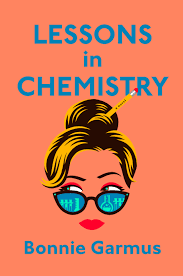Chapter 39: Dear Sirs
byDear Sirs: Miss Frask, once celebrated for her unmatched typing speed and efficiency in her professional prime, now spends her days quietly typing sermons for the local church, far removed from the lively professional environment she once inhabited. Her routine is unexpectedly disrupted when a young and inquisitive girl named Madeline, or Mad, shows up at her office with a bold request to meet someone named Wakely. Intrigued by Frask’s quick typing, Mad’s fascination sparks an unexpected conversation that bridges their seemingly distant worlds. Through this encounter, Frask is reluctantly drawn back into memories of her past at Hastings Research Institute and her interactions with Madeline’s parents, Elizabeth Zott and Calvin Evans.
As the discussion unfolds, Frask begins to share her memories of Hastings, weaving a narrative of professional sabotage, systemic discrimination, and personal betrayals that Elizabeth faced as one of the few women in the male-dominated scientific field. Elizabeth, despite her groundbreaking work and exceptional intelligence, had been repeatedly dismissed and undermined by her male colleagues. Frask recounts how Elizabeth’s career was derailed when she became pregnant with Madeline—a fact that the institution used to justify her unjust firing. This revelation leaves Madeline stunned, offering her a glimpse into the adversity her mother endured and the systemic obstacles that women like Elizabeth faced in pursuing careers in science.
Moved by Madeline’s earnest questions and her own unspoken guilt about standing by as Elizabeth suffered at Hastings, Frask begins to reevaluate her own actions during those years. When she comes across a disparaging article in Life magazine that misrepresents Elizabeth’s accomplishments and casts her in a negative light, Frask decides to take action. Overcoming her initial hesitations, she writes a bold letter to the magazine, detailing the discrimination, unethical behavior, and outright lies that Hastings and figures like Dr. Donatti perpetuated to undermine Elizabeth. To her astonishment, the letter is published, triggering widespread public outrage and bringing Elizabeth’s story into the spotlight. This moment not only redeems Frask but also begins to set the record straight about the injustices Elizabeth faced.
Meanwhile, Elizabeth, far from embracing the newfound support from the public, remains deeply private and focused on protecting her daughter. Still carrying the scars of her past experiences, she is hesitant to acknowledge the growing recognition of her struggles and achievements. Her priority is shielding Madeline from the bitterness and hardships that shaped her own life. However, Harriet, a close friend and confidante, persists in reminding Elizabeth of the impact she has had on others. Harriet shares an article by Roth celebrating unsung female scientists, including Elizabeth, and highlighting the barriers they overcame to make meaningful contributions. This recognition, while unacknowledged by Elizabeth, begins to paint her legacy as one of quiet strength and perseverance.
Amid these developments, the chapter delves into the intricate relationships between the characters, illustrating how their shared history and individual choices shaped the present. Frask’s transformation from a passive observer to an active advocate underscores the importance of confronting past wrongs and taking responsibility for complicity. Her actions, though belated, represent a redemptive arc, demonstrating that change is always possible, even for those who once stood on the sidelines. Similarly, Elizabeth’s resilience in the face of systemic discrimination highlights the enduring struggle of women in male-dominated spaces, and her determination to protect Madeline from that reality underscores her role as both a scientist and a mother.
The interplay between personal redemption, systemic critique, and the enduring power of truth creates a layered and emotionally resonant narrative. This chapter not only exposes the harsh realities of discrimination in the scientific community but also celebrates the resilience of those who continue to challenge it. It underscores the importance of allyship, the value of speaking out against injustice, and the quiet but profound ways that individuals can inspire change in the face of systemic inequities.
Through its richly drawn characters and detailed exploration of past events, the chapter offers a compelling commentary on resilience, justice, and the enduring fight for recognition in the face of adversity. The relationships and revelations within its pages highlight the power of redemption, the complexity of human connections, and the legacy of courage that shapes the paths of those who dare to stand against the status quo. It leaves readers with a sense of hope, tempered by the knowledge that change often requires both individual courage and collective action.


